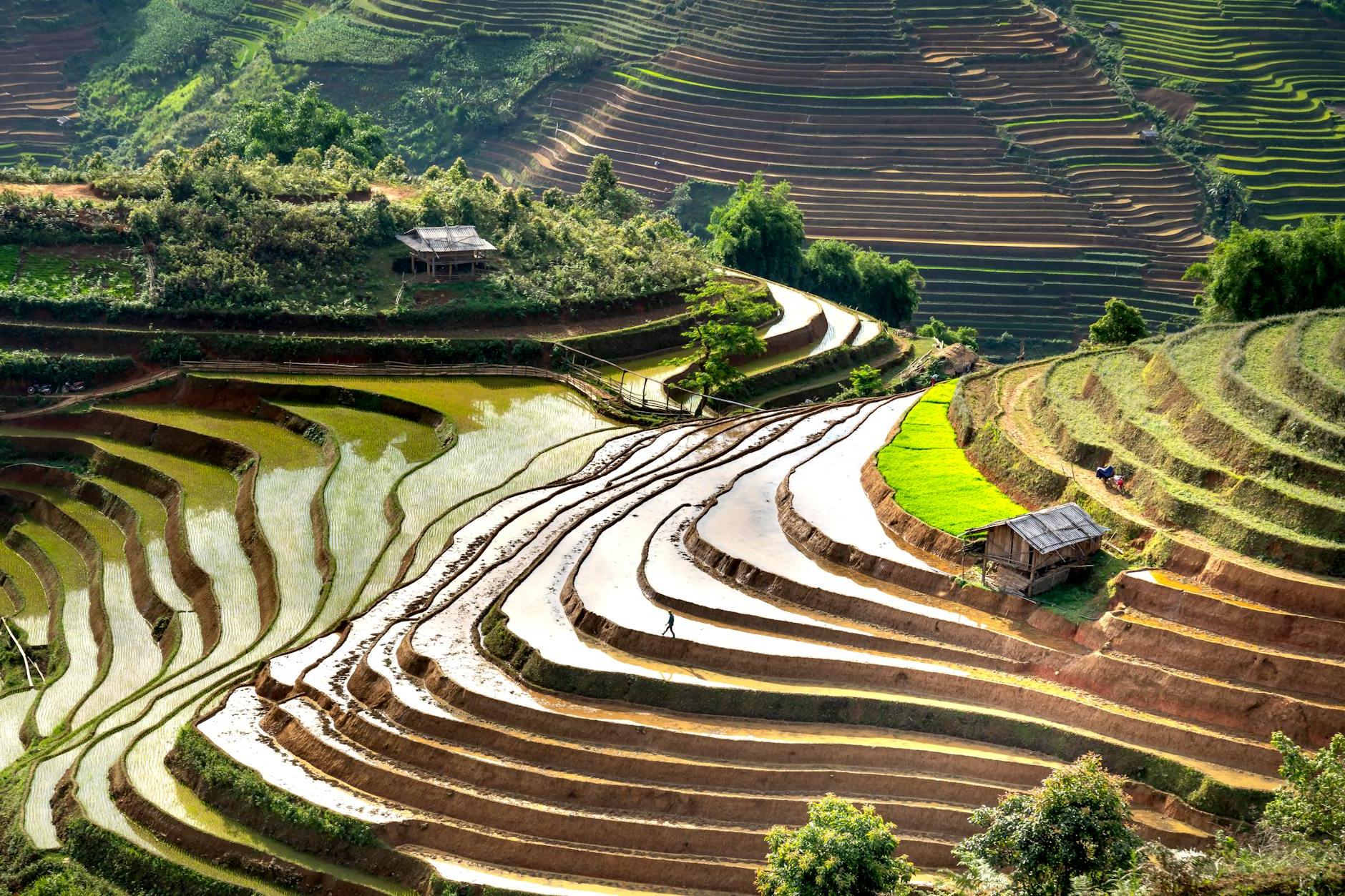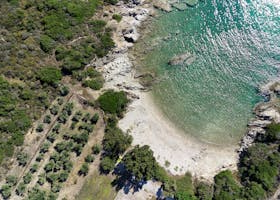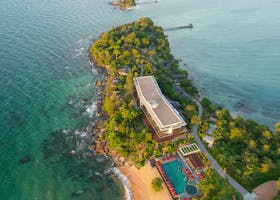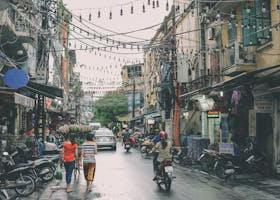Top 10 Must-Visit Spots in Sapa, Vietnam
Posted on June 4, 2024 • 9 minutes • 1895 words
Table of contents
Nestled in the breathtaking mountains of northern Vietnam, Sapa is a traveler’s paradise bursting with natural beauty, rich culture, and endless adventure. Known for its sweeping rice terraces, vibrant ethnic markets, and mist-covered peaks, Sapa offers something special for every visitor. While the peak season runs from March to May and September to November, drawing crowds with its pleasant weather and blooming landscapes, there are exciting activities and stunning sights to enjoy all year round. Whether you’re chasing the springtime blossoms, summer’s lush greenery, autumn’s golden fields, or winter’s snow-dusted hills, here are the top 10 must-visit spots in Sapa that you simply can’t miss!
10 best things to see in Sapa
10. Ham Rong Mountain
When you visit Sapa, don’t miss out on Ham Rong Mountain. This beautiful spot offers stunning views of the whole town and the surrounding mountains. You’ll find flower gardens, stone paths, and interesting rock formations as you hike up. To get there, start from the heart of Sapa town and follow the signs leading to Ham Rong. The hike isn’t too tough, but it’s good to wear comfortable shoes and bring some water. Look out for the orchid gardens and the panoramic views from the top. If you take your camera, you’ll get some amazing photos!
9. Silver Waterfall
When you visit Sapa, you should definitely make a trip to Silver Waterfall. This stunning waterfall, with water cascading down from a height of about 200 meters, offers a breathtaking view that is perfect for nature lovers and photographers alike. Getting there is fairly easy; it’s just about 12 kilometers from Sapa town. You can rent a motorbike or take a taxi to reach the waterfall. On your way, you will enjoy scenic views of lush green hills and terraced rice fields. Once you arrive, be careful on the steps leading up to the viewing platforms, as they can be slippery, especially after rain. Don’t forget to wear comfortable shoes and bring a raincoat if you’re visiting during the wet season. This natural beauty is a must-see on your Sapa adventure!
8. Cat Cat Village
When you visit Sapa, don’t miss the chance to explore Cat Cat Village, a charming and traditional village nestled in the stunning mountains. The village offers a unique glimpse into the daily life of the Hmong people, with its authentic wooden houses, beautiful terraced fields, and rushing waterfalls. To get there, you can take a short motorbike or taxi ride from Sapa town, just 2-3 kilometers away. As you wander through the village, pay attention to the handmade crafts and textiles sold by local artisans—they make perfect souvenirs. Don’t forget to wear comfortable shoes, as the cobblestone paths can be slippery, especially after it rains. Lastly, be respectful of the local customs and always ask for permission before taking photos of people.
7. Ta Phin Village
When you visit Sapa, make sure to take a trip to Ta Phin Village for an unforgettable experience. Nestled in the stunning mountains, Ta Phin offers a glimpse into the traditional life of the Red Dao and Black Hmong ethnic groups. Getting there is easy; you can hire a motorbike or take a taxi from Sapa town, which is about 12 kilometers away. Once there, wander through the picturesque rice terraces, visit the ancient Ta Phin Cave, and interact with the friendly locals who may even offer handmade crafts for sale. Remember to wear comfortable shoes and bring a jacket, as the weather can be cool and unpredictable.
6. Bac Ha Market
Visiting Bac Ha Market is a must when you’re in Sapa. This vibrant market, held every Sunday, offers a glimpse into the rich culture and daily life of the local Hill Tribes. You’ll find colorful traditional clothes, handmade crafts, and fresh produce. To get there, you can take a bus or hire a motorbike for the scenic 2.5-hour journey from Sapa. Remember to carry some cash, as cards are rarely accepted, and wear comfortable shoes for walking around. Also, be respectful when taking photographs of local people, always asking for permission first.
5. Sapa Church
When you visit Sapa, you simply must stop by Sapa Church. This charming stone church, built by the French in 1935, is a beautiful reminder of the town’s rich history and European influence. The church, officially named the Holy Rosary Church, stands out with its Gothic architecture and offers a peaceful spot for reflection amidst the bustling town. Getting there is easy, as it’s located right in the heart of Sapa town near the central square. You can just take a short walk from most hotels in the area. While you’re there, pay attention to the weekend markets that happen nearby, where you can see and buy local crafts, textiles, and foods. The atmosphere around the church is especially lively during Sundays when you can hear the heavenly choir.
4. Sapa Market
When you visit Sapa, make sure not to miss the vibrant Sapa Market. It’s a fantastic place to immerse yourself in local culture and find unique souvenirs. You’ll see colorful handmade crafts, fresh produce, and even traditional clothing from the ethnic minority groups. To get there, you can easily walk from most places in the town since the market is centrally located. If you are staying farther out, a short taxi ride will do. Remember to bring cash, as many vendors might not accept cards. Lastly, don’t forget to bargain politely – it’s part of the shopping experience!
3. Muong Hoa Valley
Muong Hoa Valley in Sapa is a must-visit for its enchanting landscapes and unique cultural experiences. The valley is home to stunning rice terraces that turn golden in the harvest season, offering picture-perfect views. To get there, you can take a motorbike or hire a car from Sapa town, which is about 10 kilometers away. When you visit, don’t miss the chance to interact with the local ethnic minority communities, such as the H’Mong and Dao people, and explore the ancient rock engravings scattered across the valley. Remember to wear comfortable shoes for trekking and bring some water, as the hikes can be a bit challenging but totally worth it!
2. Fansipan Mountain
Visiting Fansipan Mountain in Sapa is an adventure you won’t want to miss. Known as the “Roof of Indochina,” Fansipan is the highest peak in Vietnam, offering breathtaking views and a sense of accomplishment when you reach its summit. To get there, you can take a cable car from the Muong Hoa Valley, which is not only convenient but also provides stunning panoramic views of the lush landscapes below. Alternatively, for the more adventurous, there are guided treks available that allow you to really immerse yourself in the natural beauty of the region. Remember to wear good hiking shoes, bring plenty of water, and check the weather forecast beforehand as conditions can change quickly. Fansipan Mountain is a perfect blend of natural beauty and thrilling adventure, making it a must-visit when you’re in Sapa.
1. Terraced Rice Fields
Visiting the terraced rice fields in Sapa, Vietnam, should be high on your travel list. These lush, green terraces are an incredible sight and show the skill and dedication of local farmers. The best time to visit is from May to September when the fields are at their greenest or during the harvest season in October when they turn a golden yellow. To get to Sapa, you can take a train or bus from Hanoi. The train is more comfortable and scenic, while the bus is faster. Once in Sapa, you can book a guided tour or rent a motorbike to explore the fields on your own. While you’re there, be respectful of the local communities and follow marked paths to avoid damaging the crops. Don’t forget to wear good walking shoes and bring water, as you might be hiking through uneven terrain.
Frequently Asked Questions
1. What is the best time of the year to visit Sapa?
The best time of the year to visit Sapa is from September to November or from March to May. During these months, the weather is pleasant with mild temperatures and clear skies, making it perfect for trekking and sightseeing. The terraced rice fields are particularly stunning in late September when they turn golden before the harvest. Alternatively, you can visit Sapa in the winter months of December to February, which brings a unique charm with misty landscapes and even occasional snowfall. These months might also be more budget-friendly since they are less busy compared to the peak seasons.
2. Should I rent a car in Sapa?
Thinking about renting a car in Sapa? It’s a good idea to think it over. The roads in Sapa can be quite challenging, with steep hills and winding paths that might be tough to navigate if you’re not used to driving in such conditions. Traffic isn’t usually heavy, but during peak tourist times, you might face some congestion. Parking can be tricky, as spaces are limited and often fill up quickly. On the other hand, Sapa has decent options for public transport. Buses and minibuses can take you to most tourist spots. Plus, taxis are readily available and relatively affordable, making it easy to get around without the hassle of driving and parking.
3. What are different ways to get to Sapa?
To get to Sapa, there are a few convenient options. The nearest airport is Nội Bài International Airport (HAN) in Hanoi. From Hanoi, you can take a comfortable bus or a scenic train ride to Sapa, both options taking around 5-8 hours. Buses are frequent and offer different levels of comfort, from standard to luxury sleeper buses. The train ride, usually involving an overnight journey, offers beautiful views and cozy cabins. If you enjoy driving, you can rent a car and take a picturesque road trip from major cities like Hanoi, which is approximately 320 kilometers away. The roads are generally good, and you will get to experience the stunning landscapes up close. Choose the option that best fits your travel style and enjoy the journey!
4. Are there things to do with children in Sapa?
Yes, there are plenty of things to do with children in Sapa! You and your kids can take a scenic ride on the Fansipan cable car to the top of Indochina’s highest peak, where the breathtaking views will amaze everyone. For families who enjoy walking, there are easy hikes through the Muong Hoa Valley where you can see beautiful rice terraces and even visit local villages to learn about different cultures. The Love Waterfall is another great spot, offering a short walk through lush greenery that leads to a wonderful waterfall. Don’t miss the chance to explore Sapa Market, where your kids can see and maybe try some local foods and crafts. Overall, Sapa offers many kid-friendly activities that can create wonderful family memories.
5. Is Sapa safe to travel to?
Yes, Sapa is generally safe to travel to. The town is friendly and welcoming to tourists. However, like any popular tourist destination, you should be cautious of petty crimes like pickpocketing and minor scams. It’s always a good idea to keep your valuables out of sight and be mindful of your surroundings, especially in crowded places. As long as you take these common-sense precautions, you can enjoy your trip to Sapa without any worries.




